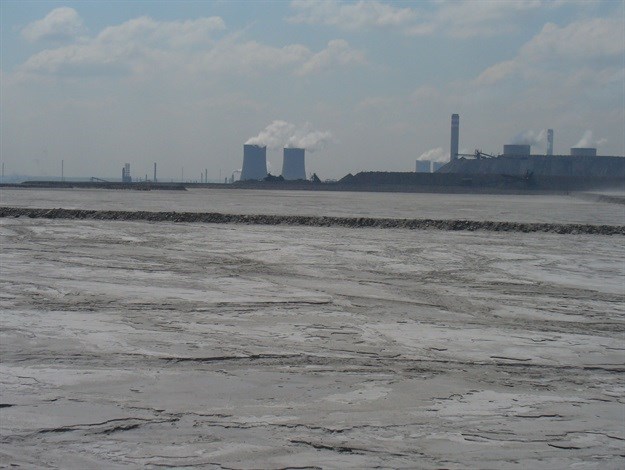How UWC plans to turn mountains of coal-ash into low-cost building materials

Already at an advanced stage, the research is proving that so-called fly ash can provide cost-effective solutions for South Africa’s building industry, while also addressing the environmental threat to air and water quality.
The reason the fly ash is such a big threat is because of the massive quantities in which it is produced, according to Professor Leslie Petrik, professor in UWC’s Department of Chemistry, who is driving the research.
Major source of waste
Fly ash residue from burning coal for power generation in South Africa is one of the country’s major sources of waste. And the situation is exacerbated by the fact that South Africa burns low-grade coal, about 40% of which is left behind as ash, which is then dumped.
The mountains of ash have been used previously as salt sinks, acting as disposal sites for the highly salty remains of water that has been purified in the power stations during the process of steam generation. But new legislation is afoot that will halt this, so, Petrik said, finding solutions had become imperative.
Working in collaboration with the Cape Peninsula University of Technology (CPUT), the UWC solution provides exactly that.
“We are working with industry to find ways for their waste to be reused, and the fly ash problem is an obvious one to tackle considering its negative environmental impact. We are proving it can be reused very productively and constructively, particularly in the building industry,” she said.
Harmful to humans
Explaining the negative impact of the fly ash dumps, Petrik said the ash was made up of very fine particles which are corrosive and abrasive. Containing many toxic metal and soluble salts that leach into the environment, they pollute both surface and ground water, and can be harmful to humans if they are inhaled thanks to the mercury and chromium they contain.
With the aid of chemistry students from UWC, the team is working to develop a prototype that will prove this ash can be turned into lower-cost roof tiles, bricks, paving stones, building elements like lintels, fire-retardant panels and insulation material.
“Our research began about seven years ago with Sasol. Once that funding ended, we received funding from the National Research Foudation to carry on our work, which we believe will provide a major boost for the building industry,” said Petrik.
With 35-million tonnes of fly ash being produced annually in South Africa, they won’t be short of raw material.
Petrik explained that all South Africa’s buildings were currently built of brick, concrete and plaster. The building industry already used up to 6% of fly ash in concrete and plaster, adding it to cement.

Replacing cement with fly ash
But the UWC research is aimed at showing cement can be replaced with fly ash. The problem with cement is that during the production process, the ingredients must be heated at very high temperatures to produce the rock-like substance, which is then ground into fine-powdered cement. This is hugely costly in terms of carbon dioxide generation.
“Fly ash has already been mined in the form of coal, and has been through the combustion process during power generation, it is there lying on the ground. If you activate it chemically, it turns into the equivalent of concrete without using cement.
“This means that it’ll be cheaper, and offer huge energy savings,” Petrik said.
After completing all the ground work, the team now has funding from the Technology Innovation Agency to develop prototype roof tiles, for which they are collaborating with CPUT’s Professor Tunde Ojumu and his students, who are process engineers.
“It’s fantastic news because it kills three birds with one stone: we are getting rid of waste by using it productively, replacing cement which saves a huge amount of energy, and the end products will be very versatile and can be used widely in the building industry,” Petrik said.
Once their prototype was complete, they would search for commercial partners.
“But we first need to get the stamp of approval on our products. So we are in the process of doing all the testing – for strength, leaching and stability. That will allow us to get a certificate of production because we have to ensure we comply with all the building standards,” she added.
Fire-retardant
Another benefit Petrik envisages is that fly ash is fire-retardant, which could offer important solutions in low-cost housing to replace chipboard and gypsum board, or so-called drywall, which are highly flammable.
“There is so much potential but we need to go through the process and develop the prototype. That is when we will need partners to turn our formula into products,” she said.
But Petrik is certain their work will ultimately see some really bothersome waste reused for some very interesting applications.








